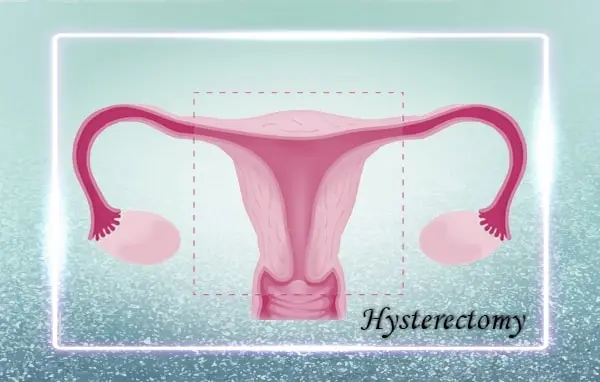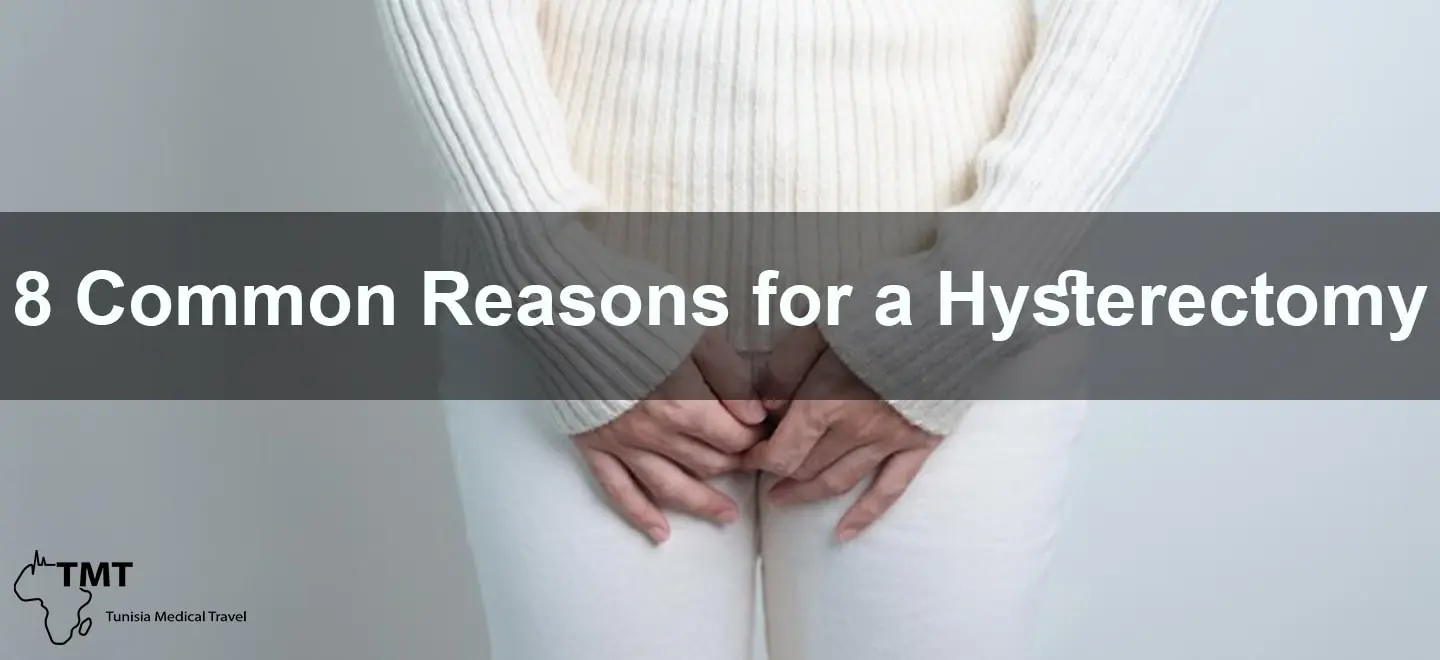8 Common Reasons for a Hysterectomy
8 Common Reasons for a Hysterectomy
1.Uterine Fibroids
The final common pathway to hysterectomy is uncontrollable vaginal bleeding. Hysterectomy is utilized for the treatment of numerous gynecologic conditions. As conclusive treatment of symptomatic uterine fibroids, hysterectomy continues to be the most definitive manner of eradicating this disease process. Given that uterine fibroids are so common in the reproductive years, it stands to reason that symptomatic uterine fibroids are responsible for a large number of hysterectomies. Uterine fibroids place a major economic strain on the health care systemThis includes both the cost of medical and surgical treatment as well as the price of days lost from work. A very important fact often forgotten by many health care providers is that there are substantial morbidity rates associated with conventional surgical management of fibroids, particularly for women desiring preservation of childbearing. This becomes a major issue given that a majority of women affected by uterine fibroids are in the reproductive years.
The only fertility sparing treatment for symptomatic uterine fibroids is myomectomy. Unfortunately, the majority of myomectomy operations are performed for the immediate or short-term relief from symptoms of fibroids with the eventual need for hysterectomy as a result of recurrence. Given the age distribution of women affected by uterine fibroids this translates to an undesirable outcome for many women. Although hormonal suppression offers a medical option for fibroid treatment, it does not provide a conclusive cure. The relatively high recurrence rate of fibroid-related symptoms after both myomectomy and medical treatment continues to prompt many to seek definitive surgical therapy offered by hysterectomy. Although many women undergoing hysterectomy for fibroids may not be ideal candidates for various forms of non-surgical fibroid treatment, this is generally due to the fact that a substantial proportion of women with symptomatic fibroids are inherently poor candidates for any uterine sparing treatment because of the nature and severity of their symptoms. This ultimately results in the agentive referral by patients for definitive surgical treatment of their fibroids with hysterectomy. In Making an informed decision is crucial for any woman taking into consideration the countless possible indications for hysterectomy. With fibroids being the leading indication, improved patient and physician education about uterine sparing treatment methods, the prevalence of various other disease processes leading to hysterectomy and the risks and benefits of the various treatment options will all serve to optimize the decision making process allowing for some women to avoid inappropriate or unnecessary hysterectomy.
2.Gynecological Cancer
Gynecological cancer, including endometrial and cervical cancer, is the most common indication for a hysterectomy. The degree of spread of the cancer and the physical condition of the patient will determine the type of hysterectomy necessary. If the cancer is localized within the uterus, with no spread to the cervix, ovaries, or fallopian tubes, a simple hysterectomy may be sufficient. If the surgeon feels it necessary, removal of the fallopian tubes and ovaries can be accomplished with a bilateral salpingo-oophorectomy. This procedure is often completed with the simple hysterectomy, rather than a more invasive operation at a later time. It is rare to perform a simple hysterectomy with preservation of ovaries because most patients with this type of cancer will eventually develop cancer of the ovaries and require a secondary surgery.
3. Uterine Prolapse
Uterine prolapse occurs from a weakening of the pelvic muscles and ligaments. The uterus drops into the vaginal canal. This condition can be associated with incontinence, problems with emptying the urinary bladder, or recurring urinary tract infections. An individual with uterine prolapse often feels fullness or pulling in the pelvis or vagina. Some women are unable to bear children due to uterine prolapse. There are several stages of uterine prolapse; in the early stages, the uterus may only move slightly into the vaginal canal. In the most severe stage, the uterus can sag so far the cervix points out of the vaginal opening. Women who have suffered from uterine prolapse often feel frustrated as it can greatly disrupt one’s daily activities. This condition is commonly seen following childbearing and menopause; however, it is often seen in women who are obese or have a chronic cough due to lung disease. A vaginal hysterectomy can be performed to treat uterine prolapse.
4. Abnormal Bleeding
Dysfunctional or abnormal uterine bleeding is diagnosed when all other causes of bleeding such as polyps, fibroids, infection, or pregnancy related conditions are ruled out. This can be a frustrating diagnosis for both the patient and the doctor. The bleeding may be heavy or light, frequent or infrequent and occur before and after menopause. This irregular bleeding can cause anxiety, social embarrassment, affect employment, and interfere with usual activities. In many cases a cause for the abnormal bleeding may not be found.
Fibroids are non-cancerous growths of the muscle cells of the uterus. They can be located on the inside or outside lining of the uterus and most commonly cause increased menstrual bleeding. Fibroids may also cause painful periods or heavy prolonged menstrual bleeding lasting for days or weeks as well as bleeding in between periods. Fibroids are the single most common indication for hysterectomy comprising approximately 30-40% of all hysterectomies. Fibroids can range in size from very small to large growths taking up the entire abdominal cavity. Fibroids are also the most common reason for a woman to have a hysterectomy in her close to the time of menopause. At times fibroids can be difficult to diagnose as the symptoms may be similar to other conditions so it is possible that fibroids may not be diagnosed until surgery is performed. Fibroids and heavy bleeding can also cause anemia and the associated symptoms of tiredness and weakness.

5. Endometriosis
In severe cases of endometriosis symptoms are severe and pain is considerable. A hysterectomy is felt to be the most radical solution to the problem but there is debate as to its success as in many cases the symptoms do not resolve. Hysterectomy will certainly stop periods and in theory stop the symptoms although in women with severe endometriosis, the removal of the womb can cause very severe pain in the short term. Hysterectomy is usually accompanied by removal of the ovaries which are responsible for production of the hormone which in turn stimulates growth of the endometriosis. This procedure is far more successful in postmenopausal women who have endometriosis as they no longer have symptoms related to ovarian hormone production.
Endometriosis is a condition where the lining of the womb grows elsewhere in the abdomen and causes heavy and irregular periods, sometimes accompanied by pain. It is not possible to be sure how common the condition is because in many women it produces no symptoms and it can be very difficult to diagnose. An estimate is that between 20-30% of women of reproductive age may have the condition. Measures to improve the condition are aimed at fairly minor surgery to alleviate symptoms and no radical surgery.
6. Endometrial Hyperplasia
Treatment consists of correcting the underlying cause of estrogen stimulation. Patients with simple hyperplasia who wish to retain their fertility may want to try progestin therapy. It has been shown that irregular bleeding will cease, and 80% to 90% of the patients will regress to a normal endometrial lining. The progestin needs to be taken for at least 3 weeks out of every month. After 6 to 9 months of progestin therapy, another D&C with biopsy is done to confirm regression to a normal endometrial lining. If the patient has not responded, a hysterectomy is indicated. Women with complex or atypical endometrial hyperplasia should be treated more aggressively with a hysterectomy. Excessive and unopposed estrogen stimulation is the cause of endometrial hyperplasia, which is the excessive growth of cells in the endometrium. Estrogen may overstimulate the endometrial lining due to obesity, polycystic ovary disease, anovulatory states, or estrogen replacement therapy. Symptoms include irregular bleeding, longer menstrual periods, or an increase in bleeding.
7. Adenomyosis
Adenomyosis is a condition in which the inner lining of the uterus, the endometrium, breaks through the uterine wall. This thickening of the uterine wall caused by the growth of endometrial tissue can cause debilitating pain and prolonged heavy bleeding in some women and can be a source of severe pain and discomfort. Little is known about the condition’s prevalence, but it is estimated that adenomyosis may be present in 20% of all women, and can be the cause of pain and severe discomfort in 60% of those women. Unfortunately, these symptoms are often attributed to other conditions such as fibroid tumors or dysmenorrhea, and the correct diagnosis of adenomyosis is often delayed. Adenomyosis occurs most likely in women aged 35-50, but can affect younger women too and is usually resolved upon menopause. Women who have had children are less likely to experience severe adenomyosis.
8. Severe Pelvic Inflammatory Disease (PID)
There are significant challenges in understanding exactly why chronic PID is associated with an increased risk of hysterectomy. This is particularly difficult since only a small percentage of women with a history of PID go on to develop severe scarring or damage which will require hysterectomy. PID has long been associated with sexually transmitted diseases such as gonorrhea and Chlamydia. However, studies have shown that these organisms are capable of ascending to the upper genital tract and setting up PID soon after acute infection with no long-term consequences. Other factors must be involved in later development of severe chronic PID.
The single biggest risk for development of chronic pelvic infection and PID is a history of appendectomy. Women with prior tubal ligation are also at increased risk of subsequent development of severe PID and those women undergoing elective tubal sterilization should be made aware of this risk. Other potential causative factors include an initial episode of PID, intrauterine contraceptive devices, early age at first intercourse, heavy smoking. Unfortunately, even identification of risk factors such as these does not necessarily enable a woman to predict her risk of developing severe PID and the potential future need for hysterectomy.

